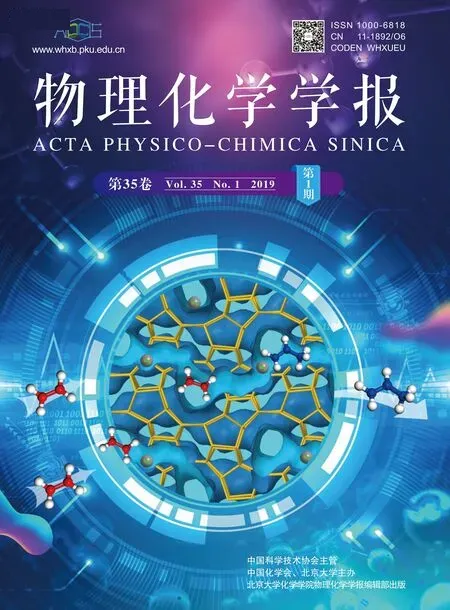Effects of Magnesium Modification on the Catalytic Performances of HZSM-5 Zeolite for the Conversion of Ethene to Propene
XU Lulu, ZHAO Zhenchao, ZHAO Rongrong, YU Rui, ZHANG Weiping
State Key Laboratory of Fine Chemicals, School of Chemical Engineering, Dalian University of Technology, Dalian 116024,Liaoning Province, P. R. China.
Abstract: The ever-increasing demand for propene has driven some new strategies to produce propene, such as propane dehydrogenation, metathesis of ethene and 2-butene, catalytic cracking of C4 alkenes, conversion of methanol and ethanol, and direct conversion of ethene, instead of the conventional naphtha-cracking process. The transformation of ethene to propene (ETP) is of great interest owing to the abundant supply of ethylene from ethane crackers and shale gas recently. HZSM-5 zeolite is an effective ETP catalyst and the acid properties of HZSM-5 significantly affect ethene conversion and propene selectivity. A series of HZSM-5 zeolites modified with different amounts of Mg (0–1.0%) were prepared by an incipient impregnation method. Their structures and acidity were systematically characterized by X-ray diffraction (XRD), N2–adsorption/desorption analysis, 27Al magic-angle spinning nuclear-magnetic-resonance (27Al MAS NMR), 29Si MAS NMR,temperature-programmed desorption of NH3 (NH3-TPD), and Fourier transform infrared (FT-IR) of pyridine adsorption techniques. Their catalytic performances in the direct conversion of ethene to propene using a continuous-flow fixed-bed micro-reactor were evaluated. The effects of reaction conditions and Mg contents were thoroughly investigated. Ethene conversion is found to decrease with increasing reaction temperature and gaseous hourly space velocity (GHSV) of HZSM-5 zeolite, while the selectivities of propene show the opposite trend. The optimized reaction temperature is 550 °C and GHSV is 3000 h-1 for the maximum propene yield. After Mg modification, ethene conversion decreases, while propene selectivity increases for HZSM-5 with increasing Mg loading under the optimized reaction conditions. HZSM-5 modified with an appropriate amount of 0.5% Mg shows enhanced selectivity of propene exceeding 45%, and the propene yield is maintained above 20%. Moreover, the selectivity of by-product aromatics is less than 8%. 27Al and 29Si MAS NMR results indicate that the introduction of Mg will result in dealumination in HZSM-5. NH3-TPD and pyridine-IR results indicate that the addition of Mg will reduce both the total acid amount and strong Brønsted acid amount and that the proper amount of Mg leads to increase in the amount of medium-strong acid. By-products such as alkanes and aromatics are mainly formed at these strong Brønsted acid sites by oligomerization and hydrogen transfer reactions. Therefore, the introduction of Mg decreases the number of strong Brønsted acid sites and further enhances the selectivity of propene. Temperatureprogrammed oxidation (TPO) and 13C CP/MAS NMR analysis of the coked catalysts indicate that the addition of Mg not only inhibits coke deposition, but also changes the type of coke. However, excessive Mg modification results in a remarkable reduction of HZSM-5 activity owing to the significant decrease in the number of total acid and strong Brønsted acid sites.
Key Words: HZSM-5 zeolite; Mg modification; Acidity; Propene; ETP reaction


